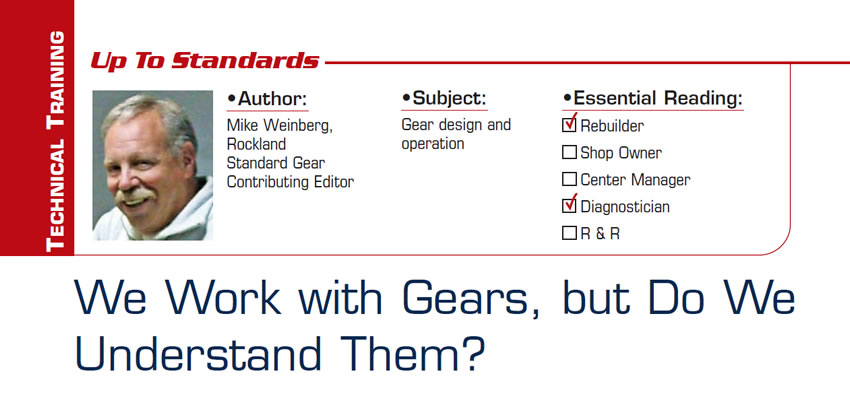Magna Powertrain Transfer Cases, Part 4
Last month we discussed the design features and mechanical operation of the Magna Powertrain MP3023/3024 (RPO Code NQH), and this article reviews the electronic operation of these transfer cases and the diagnostic routines to troubleshoot problems. These are “active,” computer-controlled transfer cases, which are capable of biasing torque to the front wheels without driver input.

Magna Powertrain Transfer Cases, Part 3
In this third part of the series on Magna Powertrain transfer cases found in late-model GM trucks, we look at MP3023/3024 (RPO code NQH). These units are known as ATC, or automatic transfer cases, which are computer activated and have five modes: Auto 4WD, 4HI, 4LO, 2HI and Neutral.
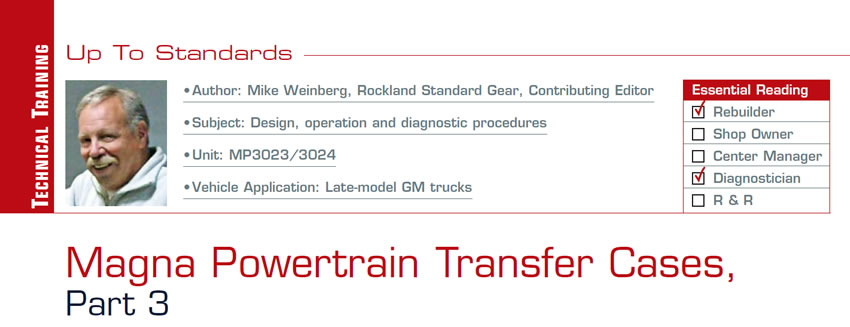
Magna Powertrain Transfer Cases, Part 2
In last month’s article we identified and explored the basics of the Magna Powertrain transfer cases found in late-model GM trucks. In this article we take an in-depth look at one of the three series of models available: the MP 1222, 1225 and 1226 models, using RPO (regular production option) code NQG.
Understanding the significance of the RPO codes on GM vehicles will make parts ordering simpler. Figure 1 shows the variations and descriptions of the NQG series of transfer cases. As these units are used in K1, K2 and K3 models of trucks, there are differences in input and output splines, chain size and number of pinions on the planets. These variations provide the torque capacity necessary to cover the different engine/transmission combinations for light-duty, heavy-duty and super-heavy-duty applications.
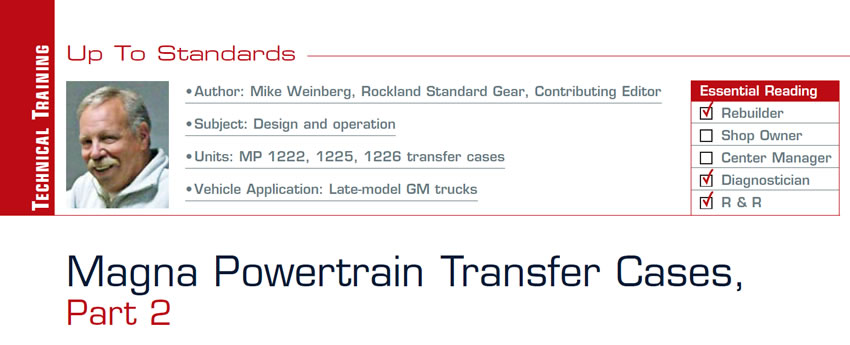
GM Transfer Cases: New Designs, Old Problems
New Venture Gear, a manufacturing arm of Chrysler Corp., was bought some years ago by Magna International, one of the world’s premier supplier of parts to automakers around the world. The division that produces the transfer cases has been renamed Magna Powertrain. GM introduced a new series of transfer cases in mid-2007, and these units are now coming into our shops for work. This will be the first in a series of articles regarding these transfer cases and going over identification, theory of operation, and overcoming some design defects and issues that are now showing up in the marketplace.
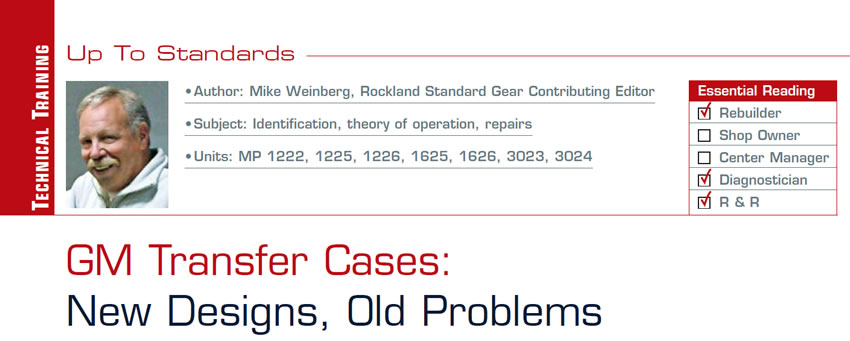
The NVG 120 Transfer Case: Simple Complexity
Such is the New Venture Gear 120 transfer case (Figure 1). This one-speed all-wheel-drive unit has no electronics to operate, and no internal clutch pack or viscous coupling. It was used in Chevy Trailblazers and GMC Envoys from 2006 to 2009. Requiring no driver input, the unit uses an internal planetary-type differential (Figure 2) to bias torque between the rear and front axles.
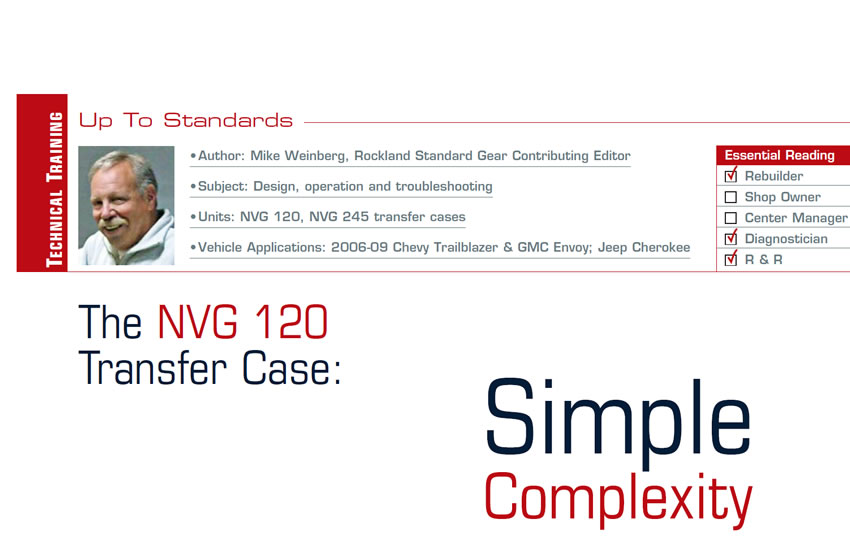
Differential Basics
Differential is a term that stems from the word difference, and it applies here because of the difference in distance traveled by the vehicle’s drive wheels in a turn. In a straight line both wheels and, therefore, both drive axles travel at the same speed. When the vehicle is entering a turn, it is obvious that the inside wheel will travel less distance than the outside wheel during cornering. If the drive axles were hooked directly into the differential carrier, to which the ring gear is bolted, the driving wheels would crow-hop and bind up in the turn, and the tires would take a lot of excess wear and heat.
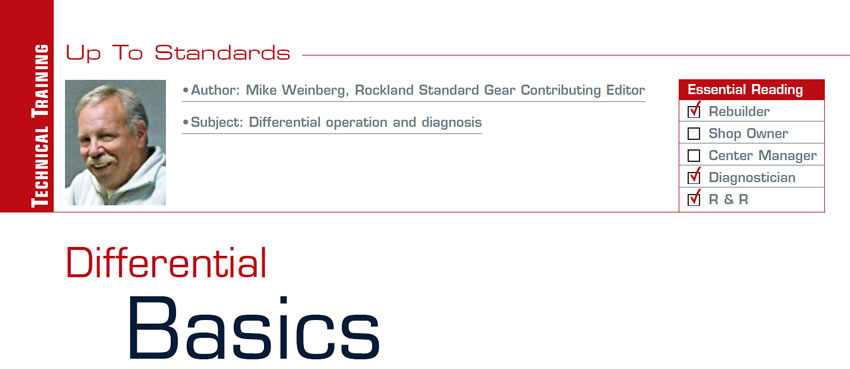
Dodge 9.25-Inch Differentials, and Why You Can’t ‘Tool’ Around
Repairing differentials is an important source of income for every shop. Many shops had shied away from what is really a simple repair but are now finding that there is not enough work to be had just repairing transmissions. Beside replacing worn or damaged gear sets, you can offer ratio changes that will increase the performance level or lower fuel consumption on many vehicles as an elective purchase for customers who have no problems with the differentials in their vehicle.
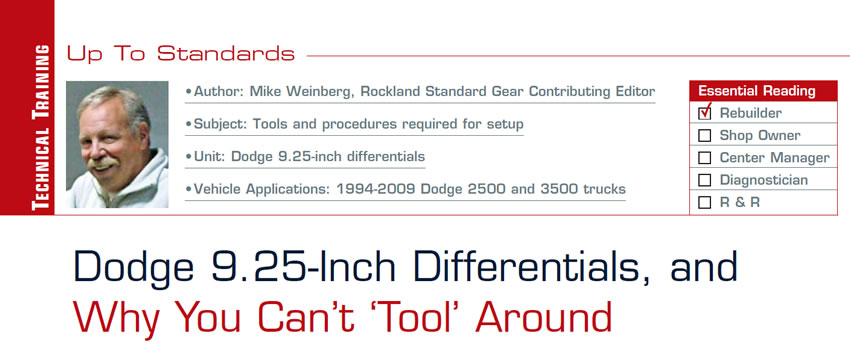
ZF Industries: More than just Transmissions
Several weeks ago my partner Brian Johnston and I traveled to Chicago to visit ZF Industries’ North American headquarters in Vernon Hills, Ill. We have had a very long relationship with ZF as a distributor of its products. When Ford decided to stop offering a manual transmission in its full-sized pickup trucks, it caused a decline in our sales of ZF manual transmissions and of parts for the five- and six-speed series of transmissions.
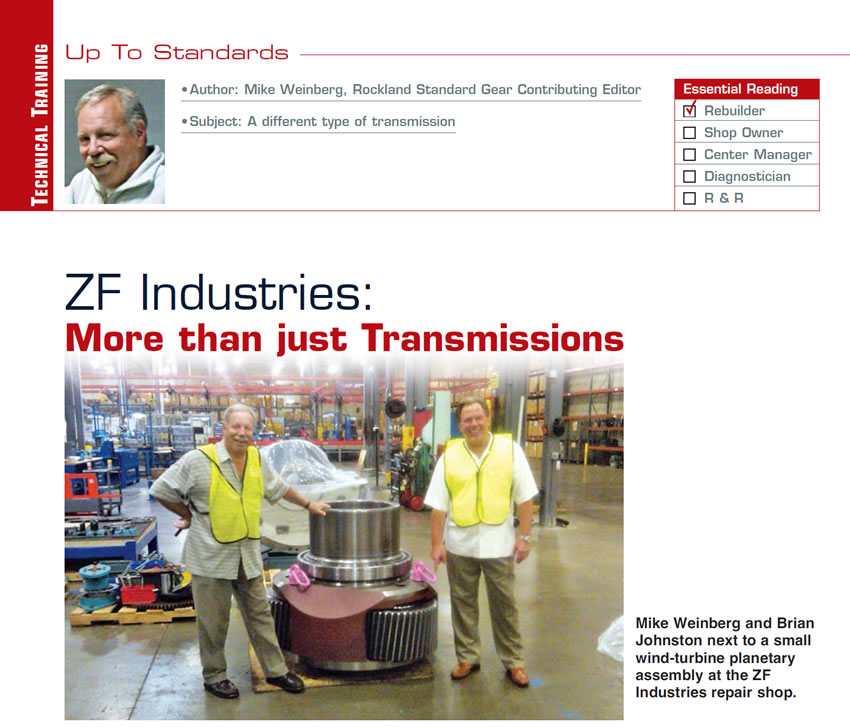
Identifying Aisin 5- and 6-Speed Transmissions
In speaking about manual transmissions in present-model domestic vehicles, we notice a marked decline in manual transmissions. Aisin World Corp., the mother company of the Aisin group of OEM suppliers, is one of the world’s largest producers of automatic and manual transmissions. Looking around we can see the decline in models available for purchase with a manual transmission among Chrysler, Ford and GM. There are no options on late-model Ford or GM full-size pickups and SUVs for a manual transmission. ZF, which had a long relationship with Ford and still provides us with work to repair past-model five- and six-speed units, is no longer producing units for the blue oval. Muscle cars from Dodge, GM and Ford are optioned with five- and six-speed manual transmissions from Tremec. Besides Tremec, Aisin is now the only player with a skin in the game.
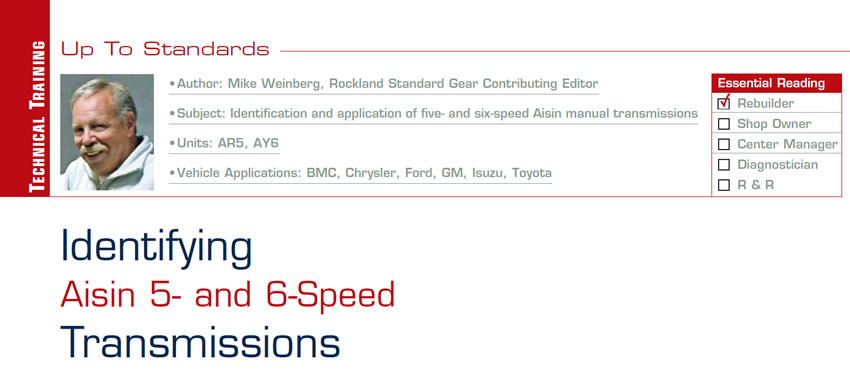
Common Failures, and Why They Happen
We must never lose sight of the basics of modern vehicle technology and design encompassing a wide variety of complex systems that activate and control the functions of the major components we are working on. The following are some examples of common failures that generate a lot of traffic on the hotlines and have many technicians scratching their heads and wasting time and money. One thing we know from experience is that you are only as good as the last thing you did for a customer.
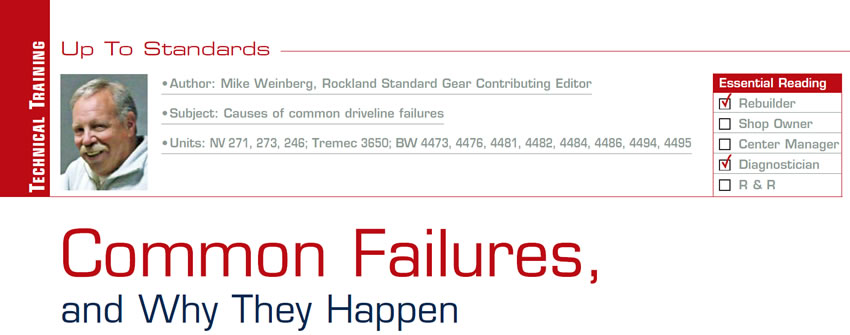
Tribology
Last month we spoke of some of the design and engineering aspects of gear technology. We will advance this discussion to examine the gear and bearing damage, which we see frequently enough. When you look at damaged gears, shafts, bearings etc. are you confident that you can identify the cause of the damage?
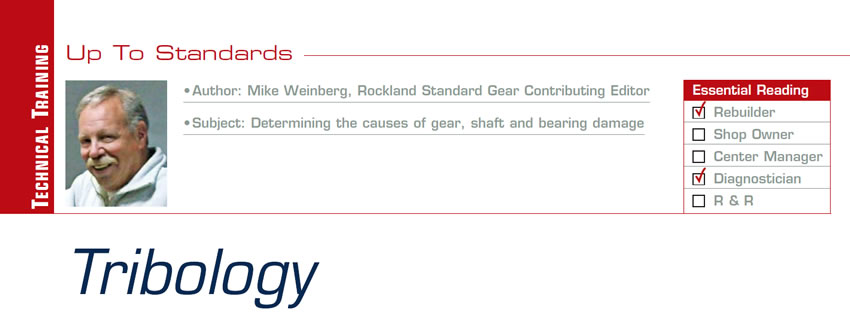
We Work with Gears, but Do We Understand Them?
Gears date to the beginning of civilization, and the development and advances in gear technology have created the modern world. We as experts in transmissions, transfer cases and differentials work with gears every day, and I thought it would be interesting to examine the theory and design, and some of the geometry involved in gear design.
